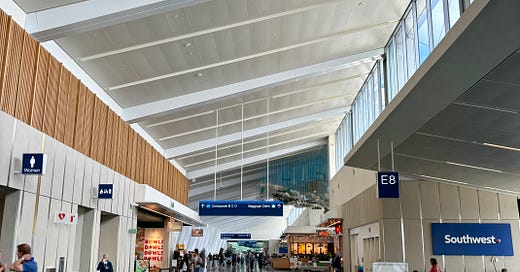What Makes a Good Concourse
Beyond the list of must haves, a great airport concourse has a je ne sais quoi design factor
Flying through Portland International Airport last August, I was reminded of a conversation I had with Hennebery Eddy Architects Principal Michelle Vo in 2020.
We were speaking about the then soon-to-open extension of Concourse E designed by Hennebery Eddy at the airport, and she mentioned that a concourse is a “hard thing to design.” There there are a l…
Keep reading with a 7-day free trial
Subscribe to Airport Architecture to keep reading this post and get 7 days of free access to the full post archives.



